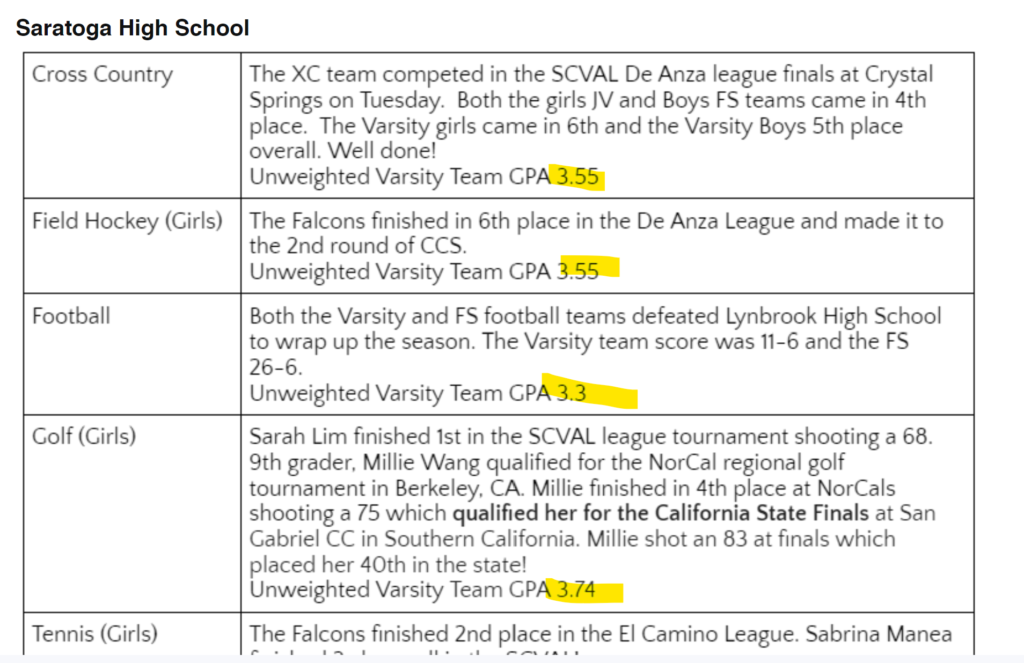The district sent out an email recapping the performances of fall sports teams on Dec. 2, but in contrast to previous sports recaps sent in principal Greg Louie’s SHS newsletter, this most recent district update included a striking and controversial statistic alongside team records: a mean unweighted GPA for all varsity teams.
The reason for doing this, as cited in the email, was to “demonstrate our excellence from students both in the classroom and on their various fields, courts and ranges.”
Seeing these GPAs listed next to the particular sports puzzled me. What was the goal of this addition? To me, all it did was either reinforce past biases I held about potential correlations between athletic and academic success, or form new prejudices regarding certain sports and their average unweighted GPAs.
On one hand, as a data person who loves numbers, I was fascinated by the GPAs. I always like looking through the numbers behind everyday things. Additionally, as a senior applying to college, GPA has been an integral part of my everyday life for quite some time.
On the other hand, this decision adds ammo to the inevitable gossip that goes on in hallways about how “X person playing on Y team performs poorly in the classroom.” It creates discourse that this school does not need — discourse that makes our campus more divided. GPAs of activities we’re affiliated with have become a growing topic of conversation, and that has contributed to increasing bad-faith dialogue.
Additionally, simply publishing this data without any sort of context feels deliberately naive, perhaps even misleading. A lot of statistical factors aren’t taken into account when only average unweighted GPA is provided. For example, freshmen have information available only for a couple of six-week grading periods. That’s a much smaller sample size than a senior who has nearly seven semesters worth of grades going into their average GPA calculation. The degree to which a couple of entries can skew each unweighted GPA calculation is also mind boggling. Contextless data is notoriously misleading, and when handed to impressionable students, it can create incorrect opinions, particularly here, where grades sadly form a significant proportion of conversations.
Another fundamental issue with the reporting of this data is the lack of consideration given to outliers. When we hear of a certain average, we usually think that a majority of participants in the dataset score in and around that average.
Those on the end of the spectrums, however, can shift averages significantly. This makes the average GPA values misleading. Especially in pretty small sample sizes like the total number of participants on a varsity sports team, not accounting for the effect of outliers and just publishing raw data is naive. Simply put, outliers make the calculations sent through these emails redundant — true academic potential and performance are not factored into them, which further decontextualizes the data.
The practice of including GPAs next to run-of-the-mill sports updates risks creating unnecessary additional competition between sports teams while also perpetuating misleading conclusions on true academic performance. In a school where academic competition is already toxic, there is no need to add fuel to the fire.
























